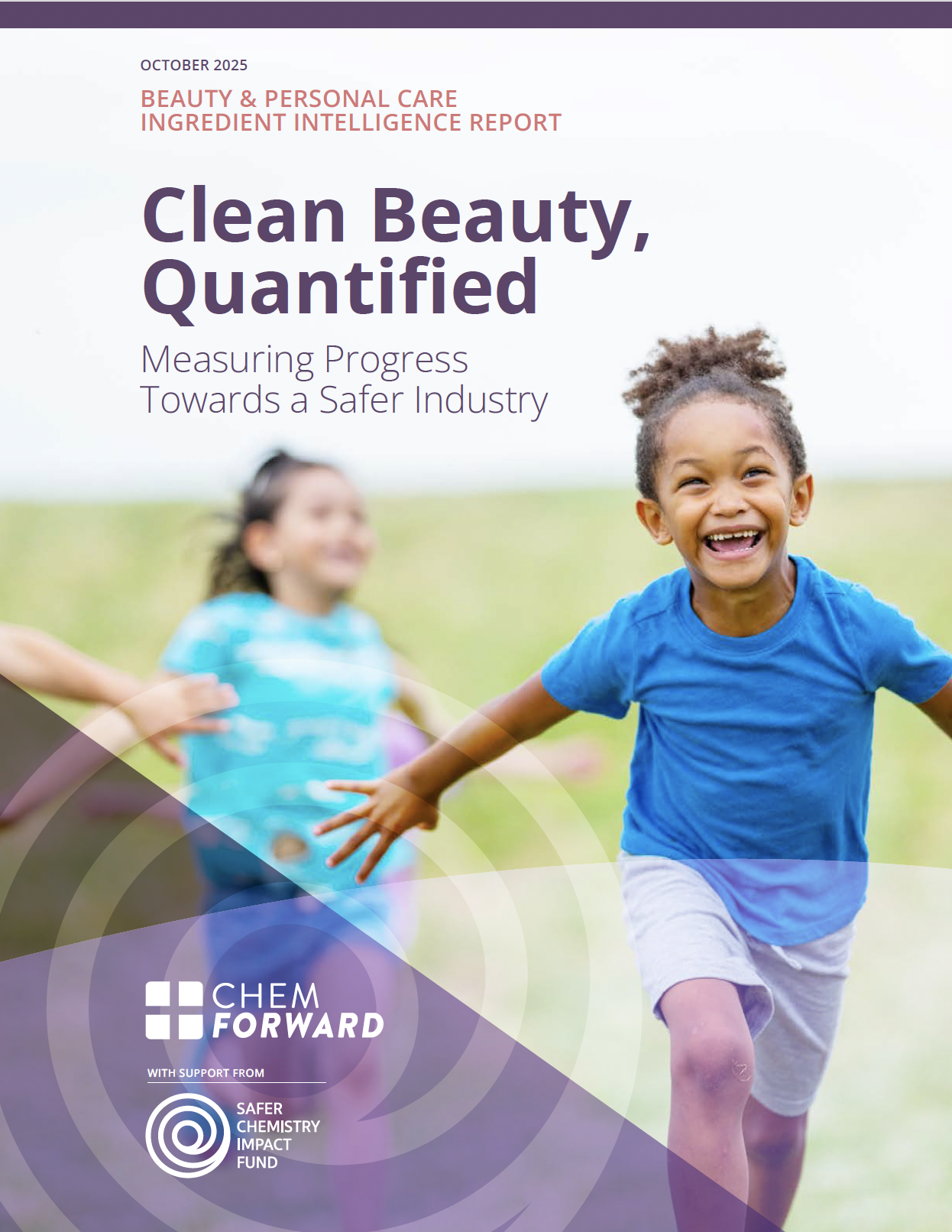Beauty & Personal Care Leaders Release 2025 Report Showing Progress Toward Safer Chemistry, Yet Urgent Gaps Remain
The Know Better, Do Better (KBDB) Collaborative, an industry-led initiative managed by ChemFORWARD, today released the 2025 Beauty & Personal Care Ingredient Intelligence Report — a collaborative, data-driven benchmark for ingredient safety in beauty and personal care. Composed of members including Sephora, Ulta Beauty, The Honest Company, Credo Beauty, Counter, Inolex, and Dow, the KBDB Collaborative represents a rare coalition of retailers, brands, and suppliers working together to create the first standardized, data-driven benchmark for ingredient safety.
Building on last year’s baseline report, the 2025 update provides the clearest picture yet of industry progress. Researchers analyzed more than 48,000 products and 1.25 million disclosed ingredients — a five-fold increase in data since 2023.
Key findings include:
24% of ingredients remain uncharacterized, representing a significant blind spot for consumer safety, brand risk, and investor liability
Chemicals of concern increased slightly, from 3% to 3.7%, largely due to three high-use ingredients newly assessed in 2025
Verified safer chemistry is on the rise, but gaps remain where innovation is needed across product categories, applications,
and chemical functions
Progress since 2023:
76% of ingredients are now characterized for safety (up from 70%)
71% are verified safer (up from 65%)
Chemicals of concern appear in fewer products, down 2% overall
Nearly 100,000 data gaps were filled collaboratively
For KBDB Collaborative members, the findings are both a milestone and a mandate. Rather than reacting to one-off regulations the Collaborative proactively seeks to understand the chemicals in use and maximize the use of ingredients that are proven safer.
“Restricted substances lists aren't cutting it anymore. The clean beauty standard has moved on. Tracking and measuring progress through hazard characterization based on comprehensive chemical hazard assessments is becoming the norm, said Stacy Glass, Executive Director of ChemFORWARD. “By characterizing ingredients and filling knowledge gaps, we are reducing risk to consumers, brands, and investors while honing on the call for innovation.”
The analysis also pinpoints where innovation is most urgently needed. Lip color continues to rely on synthetic dyes flagged as high hazard; moisturizers can contain problematic emollients; and shampoos and conditioners depend on surfactants that, while safe for humans, may pose aquatic toxicity risks.
“Investors are paying closer attention to how companies manage chemical risks in their supply chains,” said Bill Walsh, Director of the Safer Chemistry Impact Fund, which provides funding to scale and measure progress implementing safer chemistry across supply chains.
“This data-driven, collaborative model demonstrates that safer chemistry is not only possible, it’s financially prudent. The companies leading on transparency and safer ingredient innovation will be the ones best positioned to deliver long-term value.”
The report makes clear that safer chemistry in beauty and personal care is achievable — but only if the industry continues to close data gaps, eliminate chemicals of concern, and invest in innovation. The KBDB Collaborative is calling on more retailers, brands, and suppliers to join its effort to set a higher, science-based standard for ingredient safety.
About ChemFORWARD
ChemFORWARD is a nonprofit, science-based organization dedicated to ending toxic chemical exposure by making hazard data broadly accessible and highlighting safer alternatives. Utilizing the Chemical Hazard Data Trust, ChemFORWARD provides transparent,toxicologist created, peer-reviewed information that helps brands, suppliers, and scientists create safer, more sustainable products across industries like beauty, electronics, apparel, and packaging.
About Know Better, Do Better Collaborative
The Know Better, Do Better (KBDB) Collaborative, established in 2023 and managed by ChemFORWARD, brings together beauty industry leaders to improve ingredient safety across the value chain. This science-based, data-driven commitment to hazard transparency boosts confidence in using safer chemistry in beauty and personal care products by utilizing a shared data set and collaborating to fill critical data gaps. The initiative focuses on sharing science-backed information to drive safer, health-conscious decisions in beauty products.

